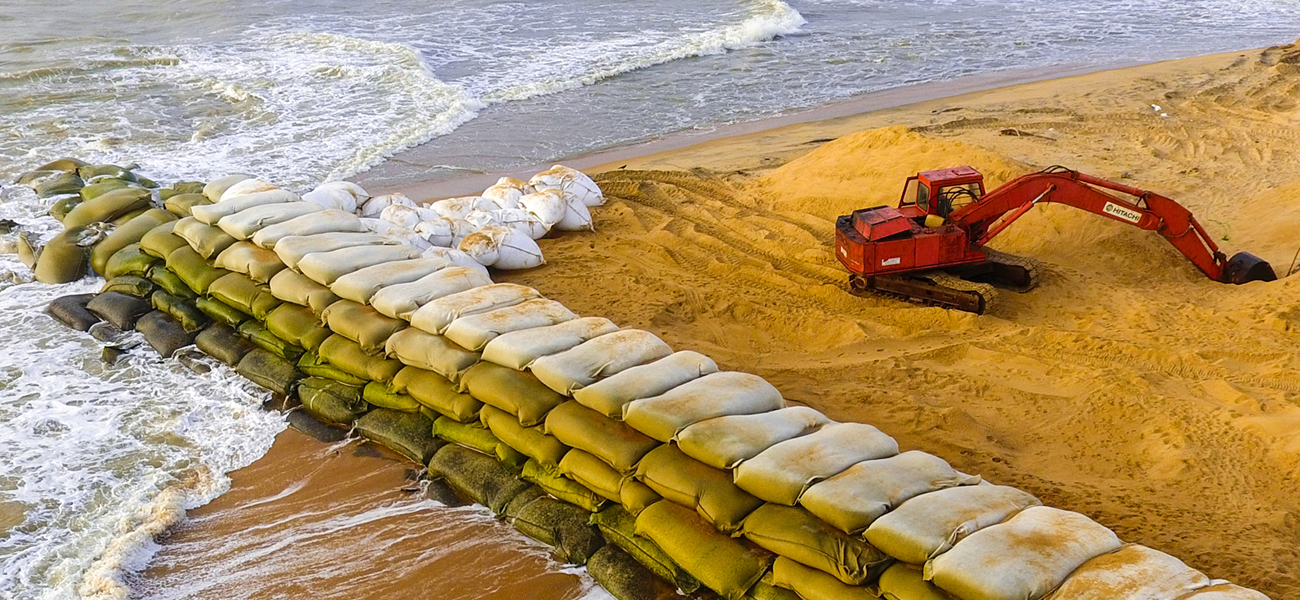December 07 2024
Geotextile Sandbags: A Sustainable Solution for Erosion Control and Flood Management
In an era of increasing environmental challenges, geotextile sandbags have emerged as a versatile and sustainable solution for erosion control, flood management, and a variety of other applications. These innovative products combine durability, adaptability, and eco-friendliness, making them an essential tool in modern environmental management.
What Are Geotextile Sandbags?
Geotextile sandbags are robust bags made from specially engineered geotextile fabric. This fabric is designed to be strong, durable, and permeable, allowing water to flow while retaining soil or sand. Unlike traditional sandbags, geotextile sandbags are resistant to wear, UV degradation, and chemical exposure, ensuring long-lasting performance in diverse environments.
Applications of Geotextile Sandbags
- Coastal Erosion Control
Geotextile sandbags are widely used to protect coastlines from erosion caused by waves, tides, and storms. By forming barriers or revetments, these sandbags prevent the loss of valuable land while preserving natural habitats.
- Flood Management
In flood-prone areas, geotextile sandbags act as temporary barriers to redirect or contain floodwaters. Their lightweight and easy-to-deploy design make them invaluable during emergency situations.
- Riverbank and Embankment Stabilization
These sandbags reinforce riverbanks, preventing collapse and erosion, especially during heavy rains or rising water levels.
- Marine and Hydraulic Structures
Geotextile sandbags are used in underwater applications to create artificial reefs, stabilize breakwaters, and support dredging projects.
- Landscaping and Retaining Walls
They are also employed in landscaping projects to build retaining walls or terraces that are both functional and visually appealing.
Benefits of Geotextile Sandbags
- Durability: Made from high-quality materials, geotextile sandbags withstand harsh environmental conditions.
- Eco-Friendly: These sandbags are often biodegradable or recyclable, reducing environmental impact.
- Ease of Use: Their lightweight design makes them easy to transport and deploy.
- Cost-Effective: With a long lifespan and minimal maintenance, geotextile sandbags are a cost-efficient solution for long-term projects.
- Customizable: Available in various sizes and fabric types, they can be tailored to specific project requirements.
How Geotextile Sandbags Support Sustainability
Geotextile sandbags contribute to sustainable development by providing an environmentally friendly alternative to traditional methods of erosion control and flood management. By minimizing soil erosion, they help preserve ecosystems and prevent sedimentation in waterways, which can harm aquatic life.
Additionally, their ability to integrate seamlessly with natural landscapes ensures that projects using geotextile sandbags maintain ecological balance.
Real-World Examples of Geotextile Sandbag Applications
- Coastal Protection in Australia:
Coastal communities in Australia have successfully used geotextile sandbags to protect beaches and residential areas from severe storm surges and erosion【1】【2】.
- Flood Control in Southeast Asia:
Geotextile sandbags have been deployed in flood-prone areas of Southeast Asia, where they have helped prevent damage to infrastructure during monsoon seasons【3】.
- Reinforcement of Riverbanks in Europe:
Projects in Germany and the Netherlands have used geotextile sandbags to stabilize riverbanks, ensuring the safety of nearby communities and agricultural land【4】.
Conclusion
Geotextile sandbags are a vital tool in modern environmental management. Their versatility, durability, and eco-friendly nature make them ideal for tackling challenges such as erosion, flooding, and embankment stabilization. As the demand for sustainable solutions grows, geotextile sandbags offer a practical and effective way to protect our environment while supporting infrastructure development.
Whether for coastal protection, flood control, or landscaping, these innovative products are shaping a more resilient and sustainable future.
